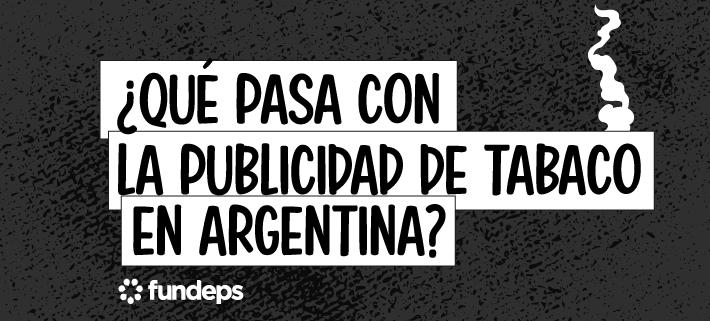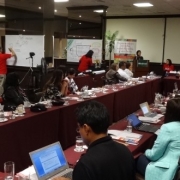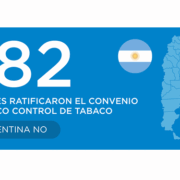An industry that does not give up
In these last 10 years we have seen great changes in the tobacco industry. Elegance and technology in its products, striking and advanced images, new words in its advertising campaigns and web pages. That is, the development of increasingly sophisticated marketing strategies, capable of quickly captivating the target audience. Very subtly and, even in an almost imperceptible way, the tobacco companies sneak into our unconscious and shape our preferences, behaviors and perceptions.
“Below, we offer a google translate version of the original article in Spanish. This translation may not be accurate but serves as a general presentation of the article. For more accurate information, please switch to the Spanish version of the website. In addition, feel free to directly contact in English the person mentioned at the bottom of this article with regards to this topic”.
These companies usually benefit from the side effect of the slowness with which States regulate their actions. An industry capable of investing millions of dollars in innovation and advertising requires strong regulatory frameworks that allow it to deal with them with due immediacy and efficiency. Otherwise, the health, dignity and quality of life of people are in danger, especially that of children and adolescents, a group on which these corporations especially focus.
What does the tobacco control law say in Argentina?
In Argentina, the National Tobacco Control Law (LNCT) is more than 10 years old. Although at the time it represented a significant advance in the matter, the truth is that it has become outdated and insufficient in the face of the arsenal of marketing strategies that the tobacco companies were developing. Added to this are the difficulties that the Argentine State has in developing adequate control mechanisms that allow it to guarantee compliance with regulations throughout the country. If the monitoring of advertising tactics in traditional media was already a challenge for the State, the control of all these new strategies promoted by the tobacco companies brings more complexities.
The industry spends millions of dollars daily to create marketing tactics that create the impression that tobacco use is widespread and acceptable. In this sense, it has been scientifically proven that advertising, promotion and sponsorship increase the chances of starting tobacco consumption, maintain or increase consumption levels among smokers and reduce the willingness to quit smoking.
In our country -at the national level-, there is a broad ban on actions of promotion, advertising and sponsorship of products made with tobacco, whether they take place directly or indirectly and through any means of dissemination or communication. However, the regulations also establish a series of exceptions to said prohibition, such as the promotion and advertising that is carried out inside the points of sale, in publications of the tobacco sector and through direct communications to people over 18 years of age, provided that they have given their prior consent and their age has been verified.
These types of partial restrictions are ineffective in reducing consumption and protecting public health. Well, advertising that is prohibited by a communication channel, is displayed and reinforced by others. In this sense, according to the Argentine experience, with the advancement of regulations that had the purpose of limiting marketing strategies, the main achievements were obtained in the field of traditional media, such as television, radio and graphic press. However, tobacco companies quickly developed other innovative ways to continue operating and thus protect their income. Some of these strategies were in express violation of current regulations and others premeditatedly took advantage of legal loopholes to continue promoting and advertising their products. In this way, the points of sale, massive events and the Internet -among others-, began to be the disputed and privileged spaces for these corporations.
The tobacco companies at the corner store
A study carried out by FIC Argentina, whose purpose was to evaluate the marketing strategies used by tobacco companies at points of sale in 8 provinces of the country, found that in 56.1% of these spaces there was some type of advertising for cigarettes or tobacco products. related, such as: cigarette packs used as decoration elements; posters with logo and/or brand that advertise certain products; posters without a logo and/or brand but that contain references, allusions or slogans related to tobacco products; shelves provided by the tobacco industry with spaces for advertising posters and lighting effects; display of tobacco products for sale through shelves.
In turn, research shows that investments by tobacco companies in points of sale have been increasing significantly in recent years. This is because these spaces are central and effective in exposing people to messages and images that position smoking as something normal and familiar. Strategic placement of packages and signage in highly visible locations (such as checkout lines, check-in and check-out areas) ensures that the brand and associated imagery stand out, serving as a visual reminder and reinforcing the desire to smoke. Added to this is the fact that a large part of the packages displayed, the posters and the shelves, are visible from the outside so that they reach not only those who enter the premises but also those who pass by in the vicinity.
“New products” + digital marketing = the perfect combo
The irruption in the market of the so-called “new products”, such as the electronic cigarette -also called Electronic Nicotine Administration Systems (SEAN) and Similar Systems Without Nicotine (SSSN)- and heated tobacco products, constituted a novelty in herself. Its sophisticated designs and the technology applied to its operation quickly captured the attention of the public, especially the youth. In addition, as if that were not enough, they began to be presented as low-risk products or as part of smoking cessation treatments, thus contributing to a false idea about smoking.
In this sense, it is pertinent to highlight that the launch of these new products was accompanied by the emergence of a new language that managed to install new terms in the market, such as “vaping”, “vaping”, “vaporizers”. All terminologies that had the purpose of not only disguising the true act that embodies the use of electronic cigarettes and heated tobacco products -that is, smoking-, but also concealed and softened the harmful consequences that their use represents for health. consumption.
In turn, the marketing of these new products was boosted by digital marketing, which used social media in particular to reach as many people as possible. Among the most outstanding strategies is the hiring of influencers and musical artists who, by reaching a large number of people, position themselves as trendsetters. In this way, they become one of the main channels used by tobacco companies to promote their products and, at the same time, establish bonds of loyalty with the young population.
An example of this is the one carried out by the company MIG VAPOR LLC through music videos that are reproduced through Youtube Argentina. The advertising contained in these videos consists of repeatedly showing famous artists -mostly from the world of reggaeton- consuming electronic cigarettes, displaying the brand name in easily visible places and in the provision of a link that is in the description of the played song that immediately redirects to the sales website of MIG VAPOR LLC.
According to the current legislation of Argentina, the promotion and advertising of the electronic cigarette, as well as any of its accessories, is specifically prohibited by Provision No. 3226/11 of the National Administration of Medicines, Food and Medical Technology (ANMAT) . Likewise, based on a systematic interpretation of the National Tobacco Control Law and its Regulatory Decree, this type of product could be found within its scope of application and, consequently, its advertising through websites and social networks is prohibited.
However, it must be said that the control by the ANMAT in this sense has been scarce to insufficient, and with regard to the control and monitoring mechanisms deployed by the Ministry of Health – the national law enforcement authority -, these have focused more than anything on traditional media and not on digital media. In this way, the tobacco companies have been left in a situation of pre-eminence in the face of the control actions deployed by the State.
There is a clear need to improve the regulation of new tobacco and nicotine products in accordance with international standards, so that it includes not only electronic cigarettes but also heated tobacco products, and so that the agencies in charge of their control can make its oversight mechanisms more efficient in order to guarantee a complete ban on advertising, whatever the means of dissemination.
VIP pass in massive events
According to a survey carried out by FIC Argentina in hostels, bowling alleys and musical events, tobacco companies often use various advertising tactics in order to attract a youth audience. Offering free samples and exchanges, delivery of promotional objects, stands decorated with screens and the aesthetic identity of the brand, are the most used strategies in these spaces. In addition, as in the points of sale, tobacco products are sold, promoted and displayed there.
In addition, those who attend the stand usually summon young people to contests and raffles, and it is there that an exchange is promoted and produced that culminates in the registration of personal data. Thus, the tobacco companies manage to increase their database and have all the necessary information for future marketing actions. Among them, e-mail marketing and social networks.
In accordance with the LNCT and its Regulatory Decree, in addition to prohibiting all types of advertising on public roads, spaces for public use, bars, nightclubs, the use of direct or indirect incentives that encourage the purchase or consumption of tobacco products is prohibited. such as the realization of promotional discounts, the delivery of gifts or the realization of contests or competitions. Likewise, the delivery of free samples, either as a gift or exchange for another product, is prohibited. Despite this, the control of these events is deficient and evidences the need to improve the monitoring and sanction mechanisms.
What do we need from the Argentine State?
The violation of current regulations on tobacco control, the inadequate control by the State added to an industry capable of investing millions of dollars in marketing and innovation, reveal the urgency of moving towards a complete ban on advertising, promotion and sponsorship , in all its forms and whatever the means of dissemination.
Promotion and advertising at points of sale, especially through the display of tobacco products, is one of the main marketing strategies used by tobacco companies. In this sense, the Framework Convention for Tobacco Control (FCTC) has established in its article 13 that “a total ban on advertising, promotion and sponsorship would reduce the consumption of tobacco products” and that, the exhibition in points of sale, should be considered in itself as a form of advertising and promotion.
In addition, according to the scientific literature on the matter as well as the provisions of the Framework Convention itself, the legislation that establishes the complete prohibition of advertising, promotion and sponsorship of tobacco products is an effective measure in the fight against smoking. Well, it has the capacity to reduce the consumption of the entire population, regardless of their income and education level.
On the other hand, faced with the advance of new products, it is necessary to guarantee a regulatory framework that expressly regulates them. The current National Tobacco Control Law does not expressly accept them and if it does, it could increase the expectations of compliance with the regulation, reduce the gray areas of the current regulations in order to prevent tobacco companies from continuing to develop abusive marketing and commercialization strategies and, in short, reduce the danger that these products represent for public health.
In this line, the 7th meeting of the Conference of the Parties to the Framework Convention for Tobacco Control in 2016 recommended that the regulation “prevent the promotion of SEAN/SSSN and prevent the adoption by non-smokers, pregnant women and young people. , minimize potential health risks to users and non-users of ENDS/SSSNs, prohibit unproven claims about ENDS/SSSNs, and protect tobacco control efforts from commercial and other tobacco industry vested interests.” . In relation to heated tobacco products, he stated that they should be subject to the normative and regulatory measures applied to all other tobacco products.
It is necessary for the State to take into account the paradigm shift that has taken place in the last 11 years since the sanction of the national Tobacco Control standard. If our regulatory frameworks are not updated and if our inspection mechanisms do not improve, it will not be possible to reduce the tobacco epidemic and, consequently, protect public health. In this sense, the ratification of the Framework Convention becomes essential, as it will be a tool that will allow the current standards of protection in terms of tobacco control to be strengthened.
An industry that is advancing by leaps and bounds, developing new products and innovative marketing strategies, requires States capable of responding quickly and effectively. Or what would be even better, anticipate the scams of these corporations.
More Information
- Industry interference in the regulation of tobacco and nicotine products
- Digital strategies of the tobacco industry: how it is convincing us to buy its new products
- Civil society organizations call for public policies free from interference from the tobacco industry
Authors
Gaetano Vaggione
Maga Merlo Vijarra
Contact
Agustina Mozzoni, agustinamozzoni@fundeps.org










